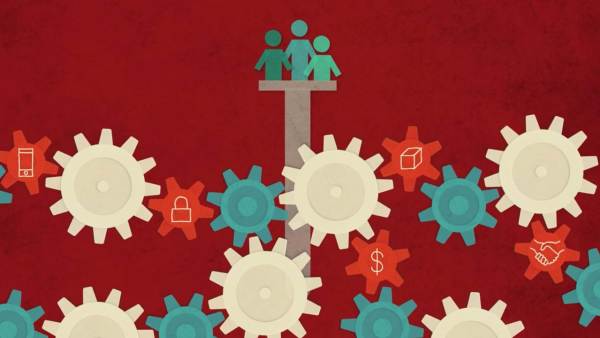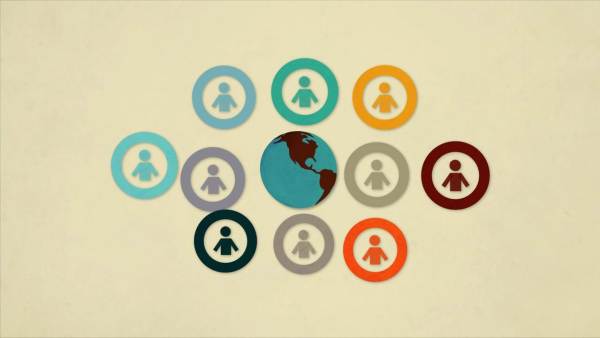How program-related investments disrupt inequality
Transcript
[Simple animated graphics support the narrative throughout.]
Most people think of foundations as organizations that serve the public good by making grants. And that’s true. But foundations can help improve people’s lives in other ways—for instance, by making loans and equity investments that advance social causes. We call these “program-related investments” or “PRIs.”
How does a PRI work?
At the Ford Foundation, we most often use PRIs to make long-term investments in communities neglected by mainstream financial institutions. It might work like this: We invest in a nonprofit fund that is trying to develop affordable housing. Our investment encourages other lenders to join in. Over time, that money is used to build thousands of affordable homes for low-income people and communities. The developers repay the loan with a small amount of interest. And with that money back in hand, we reinvest yet again in new projects that advance social change.
Why would a foundation make an investment instead of a grant?
Unlike a grant, which is not repaid, a program-related investment is just that: an investment. And because we expect to recover our investment, we can do more with our resources by using our funds again and again. A PRI can make a project seem less risky in the eyes of traditional investors. We often provide what’s known as “anchor funding,” which gives other investors—foundations, as well as banks, for-profit companies, and government agencies—the confidence to join in too. A PRI can also help an organization develop financial discipline and planning skills. In order to receive an investment, organizations typically must develop and present a 10-year financial plan, which can help increase their focus and effectiveness.
How does the Ford Foundation use PRIs?
We pioneered the use of PRIs in 1968 by petitioning Congress to approve their use. Since then, we have committed $600 million to these investments, supporting projects that range from the establishment of a women’s poultry cooperative in India to the expansion of credit unions serving low-income communities in California. Hand in hand with our grantmaking, our investments are advancing social change and helping people build better lives for themselves and their families.
[on-screen graphic: Ford Foundation logo]
Accessibility Statement
- All videos produced by the Ford Foundation since 2020 include captions and downloadable transcripts. For videos where visuals require additional understanding, we offer audio-described versions.
- We are continuing to make videos produced prior to 2020 accessible.
- Videos from third-party sources (those not produced by the Ford Foundation) may not have captions, accessible transcripts, or audio descriptions.
- To improve accessibility beyond our site, we’ve created a free video accessibility WordPress plug-in.
Making grants is just one way the Ford Foundation creates social impact. We also make loans and equity investments, known as program-related investments (PRIs), to organizations addressing the drivers of inequality.
These program-related investments are eventually repaid by the organizations that receive them, and that money is then reinvested in new projects that support our mission of building an equitable future. Because a PRI is a loan that’s paid back, the foundation is able to do more with its resources and, in turn, support more organizations working to create positive social impact.
PRIs can sometimes seem risky to traditional lenders so that’s where the foundation steps in, providing what’s known as anchor funding to help build confidence so other investors follow suit. PRIs can also benefit organizations by helping them develop their financial planning skills since they need to provide a 10-year plan to qualify for an investment.
These types of investments are a form of impact investing Ford has pioneered since 1968, when it lobbied Congress to allow their use. Since then, the foundation has committed a significant portion of its endowment to PRIs, from the establishment of a women’s poultry co-operative in India to the expansion of credit unions serving low-income communities in California.
Along with providing grants, PRIs are another powerful way the foundation works to reimagine philanthropy.
For more information, please visit: How we make grants
This is part of the Ford Explainer series, which details how the foundation is working to reimagine philanthropy.
Other videos in this series

How mission-related investments work
Every year, the Ford Foundation distributes 5% of its endowment to grants and program-related investments. The rest of the endowment is invested to generate the funds that will help support organizations in need for years to come. In an effort to reimagine philanthropy, these mission-related investments are designed to generate both social and financial returns.

How the Ford Foundation’s grantmaking works
Every year, the Ford Foundation makes around 1,400 grants to organizations fighting injustice around the globe. Our program teams identify and assess each organization, and then grants are made and monitored as part of the foundation’s aim to tackle inequality and reimagine philanthropy.

How our endowment works
The Ford Foundation is one of the world’s largest philanthropies with an endowment of $16 billion. Our endowment is channeled into grants and investments serving the public good and supporting visionary leaders on the frontlines of social change worldwide.